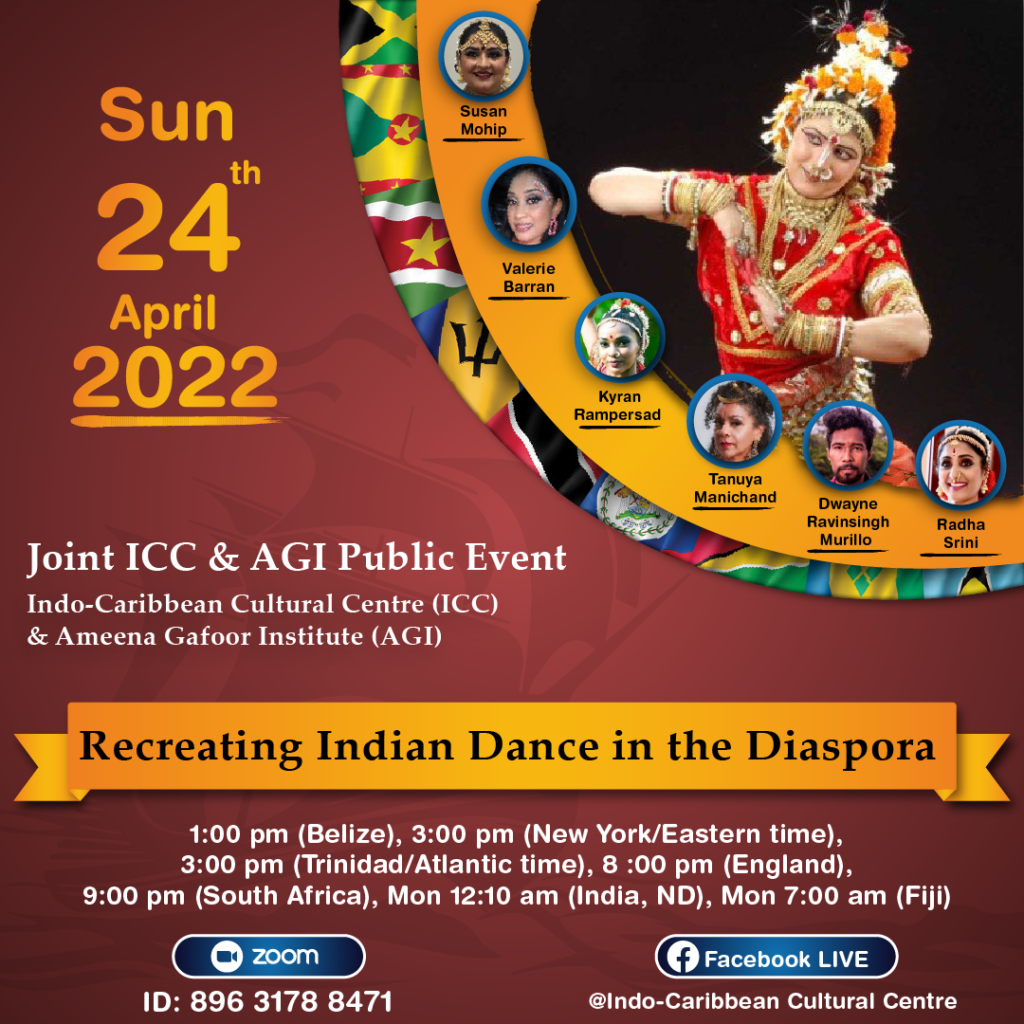
Indian dance varies from region to region and state to state in ancestral India. More often than not, performers all tell a story through body, hand and facial movements. From indentureship to post-colonialism, Indian dance has spread to cultures far away from South Asia. The Uttar Pradesh tradition of Rasleela has been maintained in the Western World ever since indentured labourers stepped off the boat in Guyana in 1838.
But what distinguishes Indian dance in the diaspora from the century-old tradition in Bharath? Surely, after more than a century and a half of settlement, some modifications must have manifested to rightly reflect the relocation and new residence. It is a natural consequence that a tradition in one city in India can produce hundreds of variants in nearby villages. But the distance from India to the Diaspora is far greater, so the theme would be retained, but the dance would veer from originality. As such, the Bihari-inspired Caribbean chutney music and dance are unique to the region. While it is important that diasporic Indian dance aspires toward culturally specific features, in what ways is it distinguishable from the inspiration of its Indian antecedent?
Speakers:
- Susan Mohip (Trinidad) – Instructor of dance at the Academy for the Performing Arts, University of Trinidad & Tobago; performer for many local and visiting international dignitaries
- Valerie Barran (Guyana) – dancer, dance teacher and group leader of the 18-member “Berbice Delight,” versed in classical, soca, modern, Bollywood and chutney dance-styles
- Kyran Rampersad (Suriname) – Former Miss Caraibes Hibiscus Suriname, model, actress, dancer, choreographer, founder of Dance school Ti22 who teaches nationally and internationally
- Tanuya Manichand (Suriname) – Studied kathak at the Indian Cultural Center of the Indian Embassy in Suriname and later at The Pandit Shambu Maharaj Academy in India
- Dwayne Ravinsingh Murillo (Belize) – A young advocate for kathak and bharatnatyam dance forms and Indian culture in Belize; member of a Corozal cultural group
- Radha Srini (South Africa) – An exponent of kuchipudi classical dance, combining her art in the spirit of the renaissance which is an amalgamation of tradition and innovation
Followed by Q&A
SEE VIDEO RECORDING by touching or clicking on this link:
https://youtu.be/80FI6EBYI4g
Hosted by www.indocaribbeanpublications.com & https://ameenagafoorinstitute.org
WhatsApp +1 868 756 4961 or +1 868 381 0386
dmahabir@gmail.com, indocaribbeanstaff@gmail.com
Please Share

is a full-time anthropologist at the University of Guyana (UG) and Fellow of The Eccles Centre for American Studies, British Library (2022-23). He is a former Assistant Professor at the University of Trinidad and Tobago (UTT). He obtained his Ph.D. in Anthropology from the University of Florida (UF). As a doctoral student, he won a Florida Caribbean Institute Award, an A. Curtis Wilgus Grant, and an Organization of American States (OAS) Fellowship.
Mahabir received a National Award (Hummingbird Silver Medal) for his contribution to education in his country in 2011. He was among 50 recipients who received a Distinguished Alumni Award from the UWI Alumni Association.
Mahabir is the author of 12 books to date.
